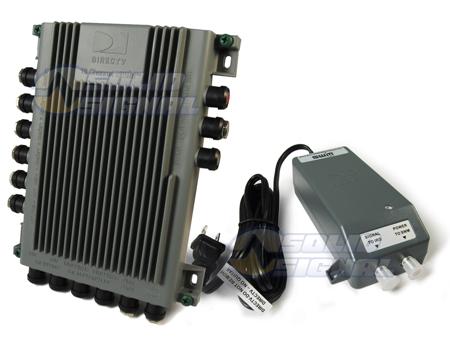A couple of weeks ago there was a discussion around the office about rack-mounting a multiswitch. It brought up the question about why SWM multiswitches are not designed for rack mounting, and it’s worth talking to you, my blog-reading faithful, about why this is.
Well, first of all let’s talk about the multiswitches themselves. As you can see in the image above they’re not really designed for rack mounting. In cases where we build headends, we usually end up bolting them to the side of the rack or to the top. It’s not impossible to put a multiswitch in a tray, but we don’t generally do it. Why?
Heat.
There’s no getting around it… some SWM multiswitches run hot. They run hot even though they have giant fins to help them cool. This is especially true of the SWM-16, which was the standard multiswitch for commercial applications for many years. In areas where the SWM is going to have trouble dissipating that heat (such as in a hot garage) I recommend using compression connectors as standoffs to help the air flow under the switch as well. Thread a long screw or bolt throught he connectors and use them to keep the multiswitch away from the wall.
Multiswitches are designed without fans and some of them just run really hot. I suspect that at some level that’s a function of poor design or perhaps a desire to save money by not engineering the chips to be as efficient, but that’s just armchair quarterbacking.
So, in general, our techs don’t mount SWM switches in a rack laying down in a tray. The heat could have a negative effect on the stuff above it unless you help it to dissipate. If you are going to rack mount the switch I’d leave about 2U of space above it or use a box fan to help the heat dissipate. It’s a really good idea, because heat kills electronics.
That’s not even the most common reason.
There’s another reason why the SWM isn’t designed to be rack mounted, and it’s because it’s usually installed with other “customer premises equipment” such as a phone box or electric box, stuff that’s usually mounted on the wall as opposed to being in a rack. Even when there’s a simple home install (one complex enough to need an external multiswitch) the SWM is separated from the rest of the equipment and wall mounted near the wiring terminal for internet service or phone service. So it does make sense from a design point of view to have the thing be wall-mountable and sit flat when mounted vertically.
There are far, far more residential installs than commercial ones. For that reason it doesn’t necessarily make sense to engineer SWM multiswitches for commercial users. After all, residential users wouldn’t see the benefit. In fact, DIRECTV spends a lot of effort to make sure that commercial users don’t need re-engineered equipment. This keeps costs down.
Of course, the nice thing about getting your supplies at Solid Signal is that you’re free to do the install however you choose, so if you have done a rack mount install of a SWM, I’d love to hear from you about how it worked out!





